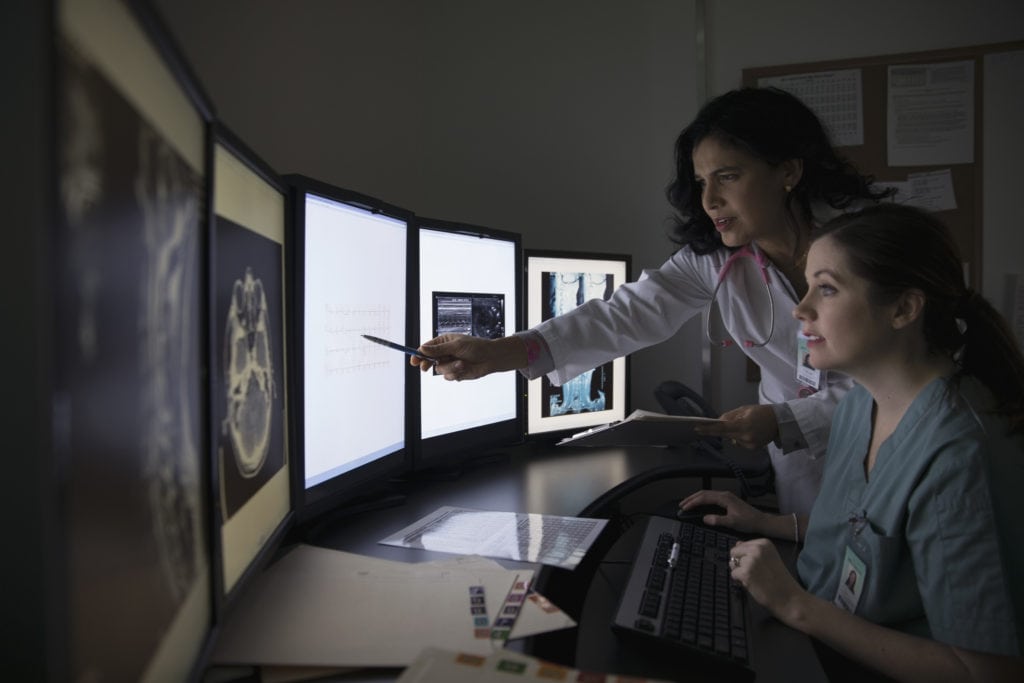
There’s no question that the healthcare field has borne the brunt of the COVID-19 pandemic. Resources have been stretched thin and organizations have been forced to adapt to an unprecedented and dire situation.
Hospital contact center employees and other non-medical staff were among the many professionals to embrace remote work early on. While this adaptation kept staff safe and vital medical services operational, it also revealed an opportunity for improvement. As healthcare organizations expanded their networks to accommodate remote employees, many realized that their network technology was lacking.
Fortunately, managed IT services specialized for healthcare are available for a variety of applications. These solutions include Unified Communications as a Service (UCaaS), Network as a Service (NaaS), software-defined wide area network (SD-WAN), and Secure Access Service Edge (SASE).
Three ways managed IT services for healthcare can transform your organization:
- Deliver secure, reliable network access for remote employees.
- Streamline communication and ensure solid connectivity.
- Layer cutting-edge network security into every layer of your business.
Below are some of the main benefits of software-defined managed IT services that your healthcare enterprise should be aware of.
Also read: The value of the cloud in our new reality
1. Empowering and safeguarding remote work with SD-WAN and NaaS
SD-WAN is a trusted and cutting-edge technology solution that revitalizes aging network infrastructure for the cloud era. While many verticals can benefit from this functionality, healthcare enterprises are uniquely positioned to embrace SD-WAN to its full potential.
Many hospitals have historically relied on Multiprotocol Label Switching (MPLS) infrastructures that offer privacy but tend to be expensive. Legacy MPLS can also lead to jumbled network atmospheres bloated with disparate connections. The vendor-agnostic nature of SD-WAN makes carrier diversity a strength rather than a weakness. By virtualizing networks, it allows hospitals to deploy whatever form of connectivity is needed regardless of licensing agreements.
Instead of needing hundreds of MPLS circuits to network all their devices, SD-WAN gives hospitals one streamlined, unified interface. This “single pane of glass” lets doctors, nurses, administrators, and support staff access every endpoint from anywhere in the network.
What makes SD-WAN an ideal managed IT service for healthcare, however, is the remote work capability it offers. When contact center employees and other non-medical personnel were sent home due to COVID-19, secure and reliable connections were critical. SD-WAN allows these employees to safely access hospital databases remotely without fear of sensitive data breaches.
Additionally, NaaS by CBTS can be deployed as a business model to standardize hospital communications systems. Healthcare networks tend to grow by absorbing the infrastructure of smaller organizations, leading to cluttered and patched-together phone systems. NaaS can be used to streamline each voice asset through a single provider to keep costs low and facilities running smoothly.
Also read: Four Considerations for Building a Remote Network with SD-WAN
2. Making cloud voice attainable with UCaaS
Many hospitals, clinics, and other healthcare organizations struggle with an overabundance of communication systems—from landline phones to two-way radios. In many cases, these organizations were reluctant to make the switch to cloud voice until 2020. When the COVID-19 pandemic made remote work a necessity, the benefits of cloud voice technology in healthcare became clear.
In the healthcare field, where lives hang in the balance each day, efficient communication is paramount. That’s why leading clinicians and hospital administrators across North America are embracing UCaaS as an advanced communications solution. UCaaS transforms networks of traditional handsets into hybrid communications models that combine existing devices with cloud voice applications. As a managed service, UCaaS by CBTS also offers predictable expenses and ongoing ground-level support to ensure dependable performance.
The last thing medical professionals need to worry about is whether their phone systems work. Managed IT services for healthcare like UCaaS can be leveraged to mitigate this issue.
Also read: Stepping up your UCaaS experience with SD-WAN
3. Integrating security measures into each layer of the network
Network security is a top concern for much of the enterprise world, but especially so for healthcare organizations. With hospitals and clinics processing and storing sensitive patient data every day, breaches must be prevented at all costs. To meet these standards, healthcare leaders are seeking out network security that accounts for every possible contingency.
SASE by CBTS tackles this challenge by implementing industry-leading firewalls at the edge of globally distributed cloud networks. This means every networked device can be as secure as the internal data center, with no weak links left vulnerable.
This solution is complemented by an industry-leading cloud security implementation process that starts with a thorough assessment by CBTS engineers. CBTS is capable of moving every security measure into the cloud, meaning security is no longer tied to physical buildings. This cloud-native approach marries well with the managed IT services for healthcare mentioned above.
Also read: MDR: Another security fad? Think again.
Evolve your enterprise with these managed IT services for healthcare
New technologies change the face of medicine on a regular basis, and healthcare organizations often struggle to keep pace. That’s where managed services come in. A trusted partner can help your enterprise utilize the benefits of cloud technology in healthcare while mitigating risk and simplifying expenses.
Contact CBTS today to learn how managed IT services for healthcare can take your hospital or clinic to the next level.




















